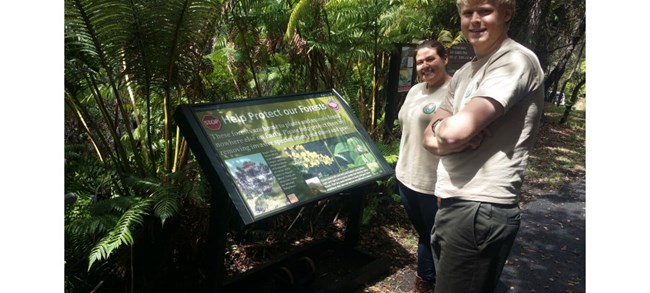Help prevent the spread of this terrible disease.
Visit our keyboard shortcuts docs for details
Learn how you can protect this keystone species that help builds our watersheds, cultural traditions, and natural resources. What is ROD?Rapid ʻŌhiʻa Death (ROD) is newly identified fungal disease currently attacking and killing ʻōhiʻa on Hawaiʻi Island. This fungus clogs the tree's vascular system, depriving the canopy of water, and may kill ʻōhiʻa very quickly. ʻŌhiʻa is the keystone species in Hawaiian forests, and ROD has the potential to cause major ecosystem disturbances that will negatively impact watersheds, cultural traditions, natural resources, and quality of life. Learn how feral animals influence Rapid ʻŌhiʻa Death through this StoryMap provided by the University of Hawaiʻi. 
NPS Photo Where is ROD?ROD has been found mostly on Hawaiʻi Island, although cases have also been detected on Maui, Oʻahu, and Kauaʻi. In the park, ROD infected trees have been confirmed in the lower elevations of the Kahuku unit, in the Ka‘ū District. More recently, infected trees have been identified in Kīpukapuaulu, ‘Āinahou, and Chain of Craters Road near Ko‘oko‘olau Crater. More than 1,000 trees have been sampled throughout the park. A small number of isolated ROD infected trees have been found in the rainforests surrounding the Kīlauea Visitor Center and areas including Volcano House and Thurston Special Ecological Area. It is important to note that patches of dead trees are found throughout the park, and these do not appear to be caused by ROD.
NPS Photo Help stop the spread!Help protect ʻōhiʻa - the keystones species of the native rainforests of Hawaiʻi.
Rapid ‘Ōhi‘a Death brochure (external site) |
Last updated: April 26, 2024
